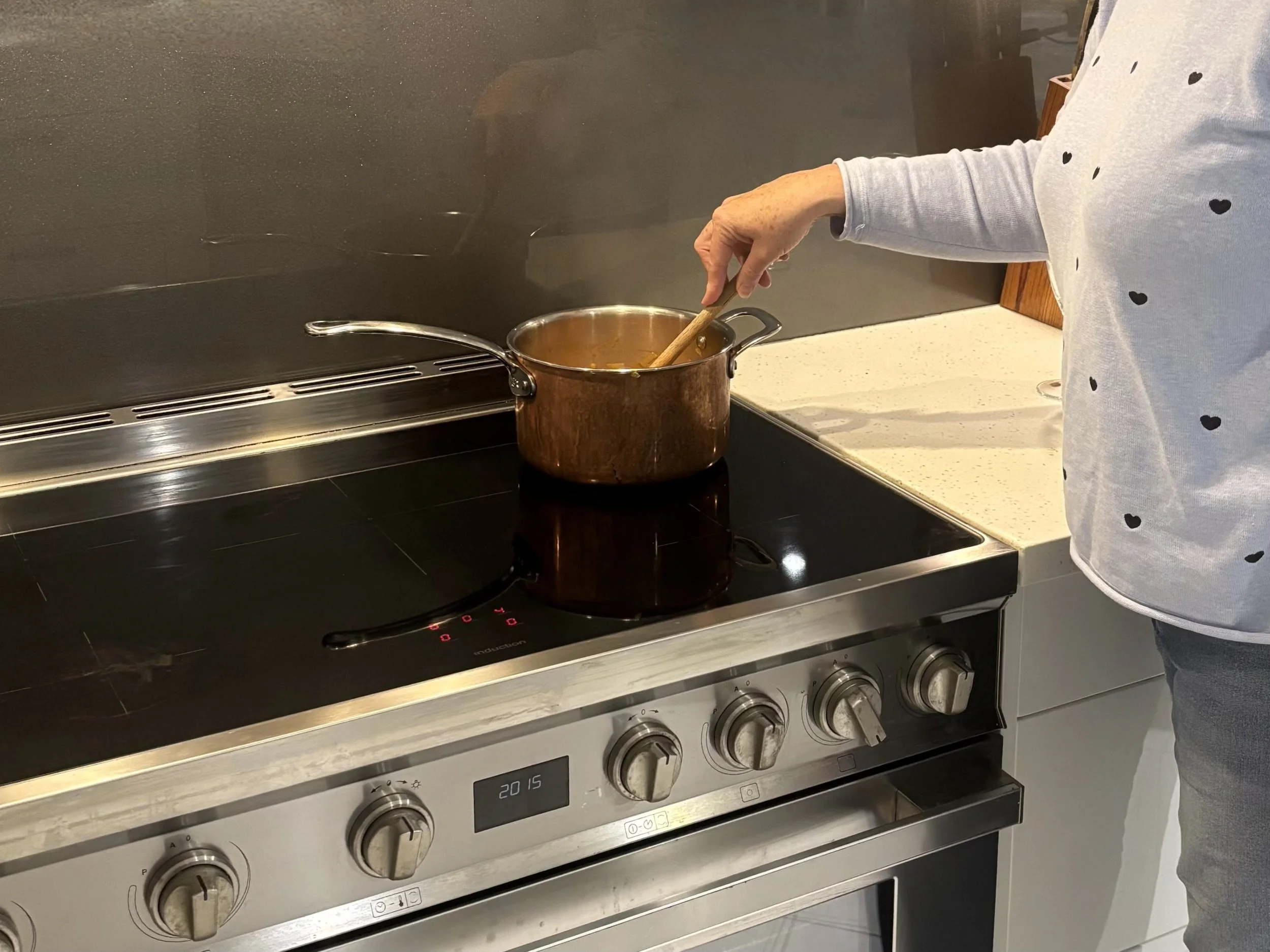Getting Off Gas Wasn’t a Hardship
We were doing a kitchen refresh and the much-loved freestanding, extra-wide electric oven with gas cook-top was reaching the end of its useful life. The only reason for those two bottles of gas at the side of our house was for the cook-top.
Why did we change?
We’re a great team. My husband loves to cook. I love to eat. Both of us used to enjoy cooking with gas for the instant heat and speedy temperature response when adjusting the flame.
But we didn’t know then that gas in the home is not the healthiest option, especially for someone like me with sensitive airways and a tendency to allergies and asthma. Some of the by-products of cooking with gas in the home include increased exposure to nitrogen dioxide, volatile organic compounds, polycyclic aromatic hydrocarbons and carbon monoxide. The evidence is growing that such exposure is detrimental to respiratory health and probably other aspects of health as well. Some of the evidence shows nitrogen dioxide exposure leads to symptoms such as chest tightness, shortness of breath, wheeze, cough, decreased lung function and increased inhaler use in children with asthma.
I didn’t need much convincing. Anything I can do in my home to reduce exposure to asthma and allergy triggers would be worth it. I’ve already given up strong-smelling cleaning products , most perfumes and scented candles; a gas cook-top wasn’t a step too far. We were also interested in getting off the gas as part of electrifying our home and powering it with those solar panels on our roof.
How and what we chose
My husband chose a Smeg electric oven with an induction cook-top. Same brand, same size, same quality as before. We wanted a good quality oven with an effective two-fan heater for the oven and a pyrolytic feature for easy cleaning. We needed something freestanding and the same size as the previous stove to fit in the existing space. Plus we like a wide oven that fits six pizzas at a time for when friends and family visit.
We also have occasions when all five burners on the wide cook-top are in play. A sleek, shiny, easy-to-clean induction cook-top - again mainly for the fast heat - suited our needs. It gets used several times a day - from boiling the kettle for a cuppa to cooking our meals.
It was also important to the chef (an electrical engineer) that the induction control knobs were on the front of the oven and not on the cook-top surface where they could be corrupted by food splashes, etc.
And unlike gas, there is no flickering flame trying to burn the oven mitts and tea towels. When you take the pan off and walk away, forgetting to turn the burner off, there is no heat. Great safety features. Removing the bottled gas was easy and that’s one account we never have to think of again. While I can’t say for sure my asthma has gone, I certainly haven’t had an attack since we said farewell to the gas.
Downsides
Our electric oven with an induction cook-top didn’t come cheap.
We paid over $10,000 for the appliance itself.
We had to buy a new set of pots and pans to suit induction. Fortunately we have two grown daughters who were very happy to take ownership of some of our old cookware.
We also had to upgrade to a higher power circuit in the house to feed the new beast.
There was a very short learning curve regarding the new cook-top. Because it’s so fast - almost instantaneous - you don’t need to let the pan warm up for long at all. Our ancient wok with the patina built up over decades of use is no longer in use. Hopefully it will still have some use on the next camping trip.
Recommendation:
Make the change to induction cooking when you can. Given the cost, it’s probably best done during a kitchen renovation or when your existing appliance needs replacing.

